Experiments
Swallowed giraffe liver parasite
1928: Emmett Price of the US Bureau of Animal Husbandry swallowed the larvae of an unknown parasite he found in the liver of a dead giraffe. His boss explained that it was considered tradition within the parasitology section of the Bureau to self-experiment in this way.
Buffalo News - July 11, 1928

Indianapolis Star - July 2, 1928
Posted By: Alex - Tue Jul 23, 2024 -
Comments (2)
Category: Science, Experiments, 1920s
Making a dead dog bark
1909: Dr. Marage of the Paris Academy of Sciences removed the larynx from a dog and made it bark outside of its body. The larynx produced "barks and howls in every note of the canine register, from the deep baying of a mastiff to the shrill pipe of a terrier."I haven't been able to find out what Dr. Marage's first name was. All the sources I can find simply refer to him as 'Dr. Marage'.

The Sketch - Dec 15, 1909

Scientific American - Feb 5, 1910
Text from Scientific American (Feb 5, 1910):
When the larynx of a dog is removed during chloroform anesthesia, the laryngeal muscles retain their ability to contract for a short period, which varies from 3 to 10 minutes, but no contraction can be produced in the muscles of a dead larynx, even if it is removed immediately after the death of an animal, because the arterial blood has escapes.
In order to produce the vibrations, the current of air should be impelled by a pressure of from 6 to 8 inches of water, as it is in the normal production of the human voice. In these conditions the excised larynx of the dog barks and howls in every note of the canine register, from the deep baying of a mastiff to the shrill pipe of a terrier. These various notes are obtained at will by causing various muscles to contract.
Posted By: Alex - Thu Jun 20, 2024 -
Comments (0)
Category: Experiments, Dogs, 1900s
Voluntary Alcohol Consumption in Chimpanzees and Orangutans
A study published in the June 1968 issue of the Quarterly Journal of Studies on Alcohol involved giving chimpanzees and orangutans as much vodka (mixed with fruit juice) as they wanted to drink in order to find out if they'd become alcoholics.Reportedly the chimpanzees were enthusiastic drinkers and became drunk repeatedly. But oddly, the orangutans, although they drank, never showed any signs of intoxication.
I'm curious to know more details about the study, but unfortunately the article itself is locked behind a paywall.


Central New Jersey Home News - Aug 22, 1968
Posted By: Alex - Wed Jun 05, 2024 -
Comments (1)
Category: Animals, Inebriation and Intoxicants, Experiments, 1960s
Coin-Toss Experiment
Is a coin toss truly random? Not according to the "D-H-M model" which proposes that a tossed coin is slightly more likely to land on the same side that it started.To test this model, a team of researchers at the University of Amsterdam arranged for a group of subjects to flip coins a total of 350,757 times. Their conclusion: "the data reveal overwhelming statistical evidence for the presence of same-side bias."
What this means as a money-making strategy:
More info: "FAIR COINS TEND TO LAND ON THE SAME SIDE THEY STARTED: EVIDENCE FROM 350,757 FLIPS"
Posted By: Alex - Thu Apr 11, 2024 -
Comments (5)
Category: Money, Experiments
An Upside-Down Experiment
In 1950, graduate student Fred Snyder of the University of Wichita spent 30 days wearing special glasses that inverted his vision. It was part of an experiment designed by Dr. N.H. Pronko, head of the psychology department, to see if a person could adapt to seeing everything upside-down. The answer was that, yes, Snyder gradually adapted to inverted vision. And when the experiment ended he had to re-adapt to seeing the world right-side-up.Snyder and Pronko described the experiment in their 1952 book, Vision with Spatial Inversion. From the book's intro:
Such an experiment is out of the question, of course. Yet another experiment was made: a young man was persuaded to wear inverting lenses for 30 days, and his experiences are reported here. His continued progress, after an initial upset, suggests that new perceptions do develop in the same way as the original perceptions did. Life situations suggest the same thing. Dentists learn to work via a mirror in the patient's mouth until the action is automatic. In the early days of television, cameramen had to "pan" their cameras with a reversed view. Later the image in the camera was corrected to correspond with the scene being panned. The changeover caused considerable confusion to cameramen until they learned appropriate visual-motor coordinations. Fred Snyder, the subject of our upside-down experiment, found himself in a similar predicament, at least for a time.
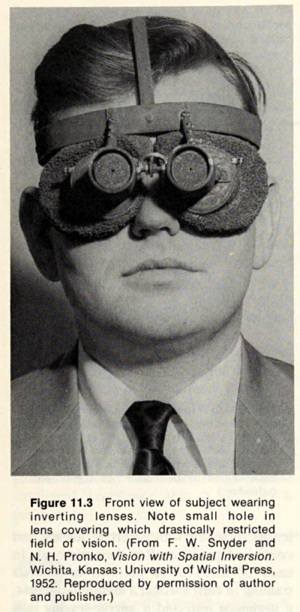
Images from Life - Sep 18, 1950:
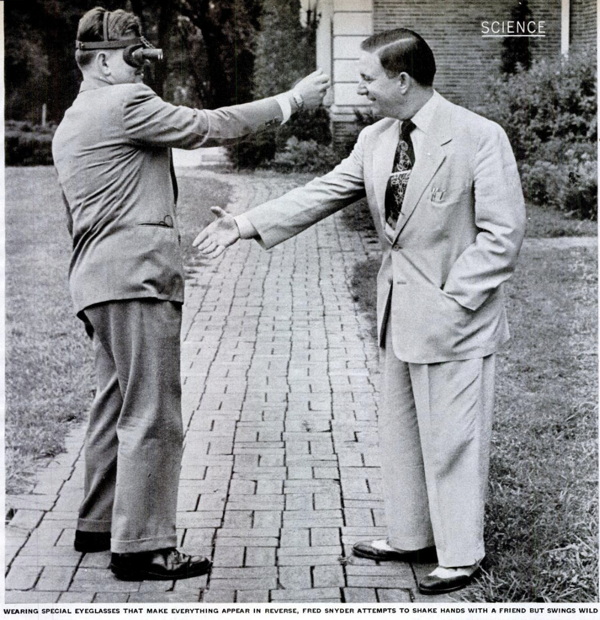
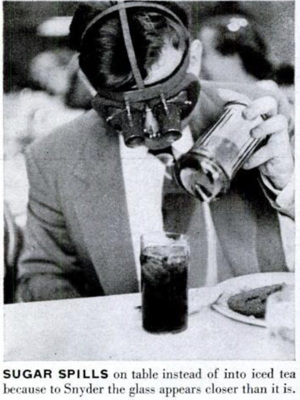
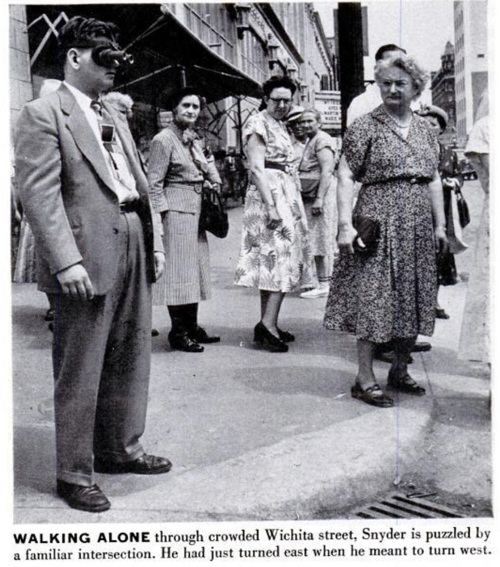
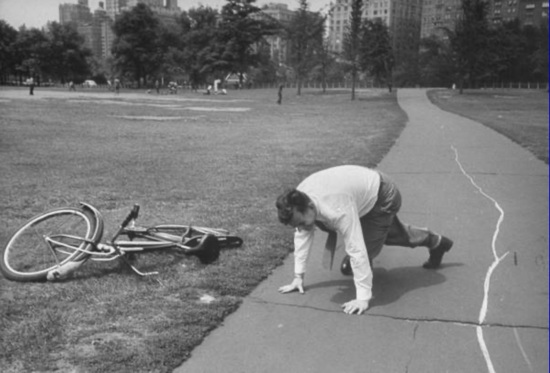
"Graduate student Fred Snyder falling down after removing special eyeglasses that reverse and invert everything he sees. Immediately before removing glasses he rode a bicycle with perfect control along sidewalk in Central Park."
Posted By: Alex - Mon Mar 25, 2024 -
Comments (2)
Category: Experiments, 1950s, Eyes and Vision
The science of shaking Christmas presents
Researchers at the University of Michigan have been studying people shaking boxes in order to shed light on "epistemic action understanding." Or rather, "Can one person tell, just by observing another person’s movements, what they are trying to learn?"In other words, as you watch someone shake a box, can you figure out what information they're trying to gather about the contents of the box (i.e. the shape or quantity of things in it)?
More info: "Seeing and understanding epistemic actions"
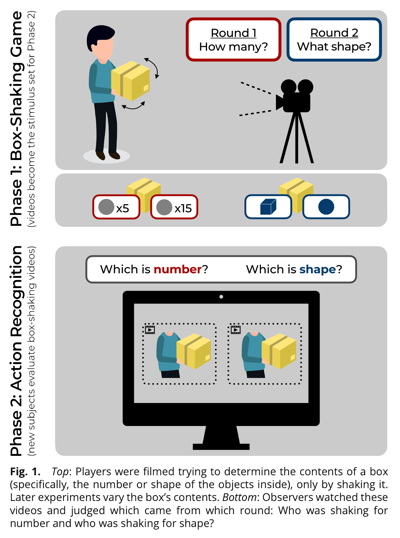
Posted By: Alex - Sat Dec 30, 2023 -
Comments (0)
Category: Science, Experiments, Psychology, Christmas
She sold her body for gingerbread
Requesting "all the ginger-bread she could eat" in exchange for her body after death initially struck me as a bizarre detail. But the more I think about it, the more reasonable it seems given that condemned prisoners often request cookies, candy, junk food, etc. as their last meal.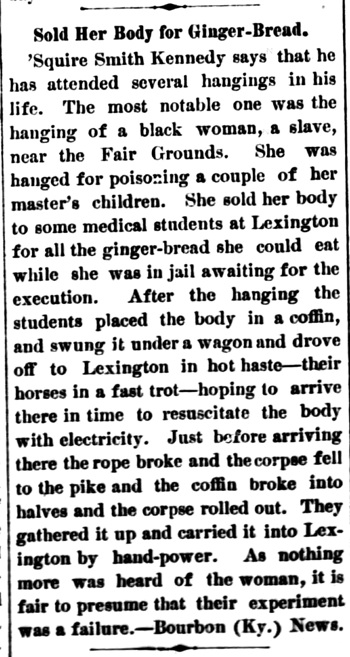
Whiting Weekly News - Jan 25, 1890
Posted By: Alex - Sat Nov 18, 2023 -
Comments (1)
Category: Death, Food, Prisons, Experiments, Nineteenth Century
Whole brain not needed for handling money
Mention to any friends who are bankers or accountants that science has shown they could have a frontal lobotomy and still do their job, and see how they react.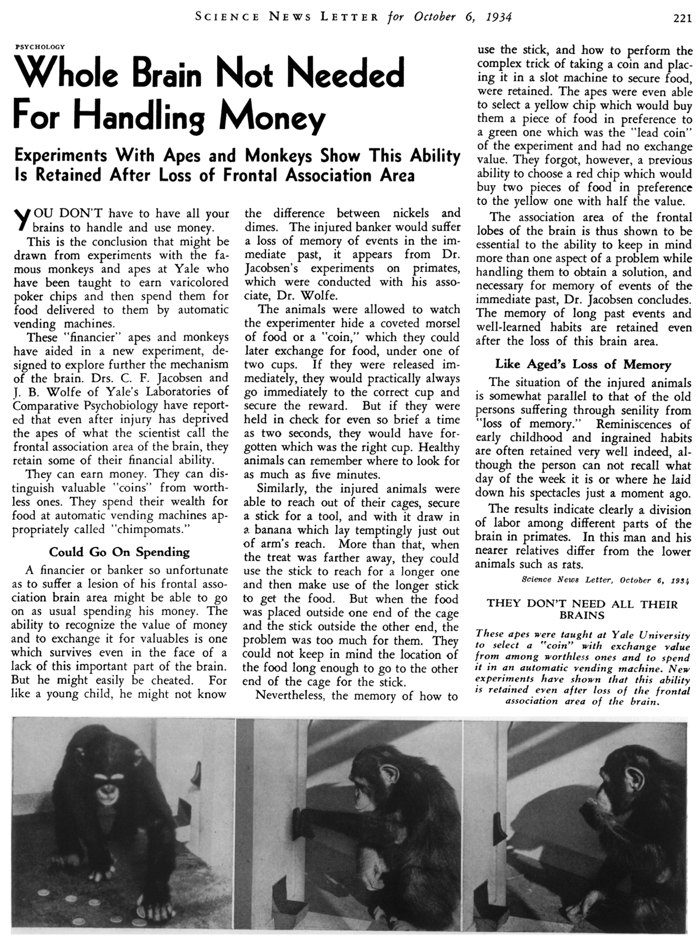
Click to enlarge
Posted By: Alex - Mon Sep 04, 2023 -
Comments (0)
Category: Money, Experiments, Psychology, 1930s
Warming Pills
Glycine is readily available as a supplement. I hadn't heard about its supposed warming properties.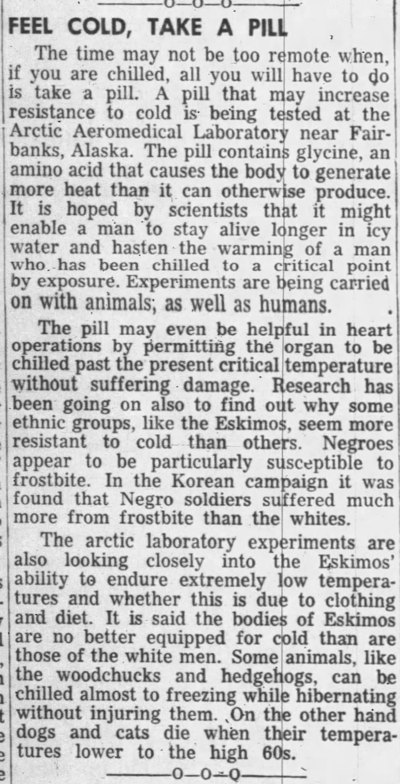
Scranton Times-Tribune - July 25, 1957
I searched for the research that inspired the newspaper report above and found a 1956 study, conducted at the Arctic Aeromedical Laboratory, that involved immersing dogs in freezing water. The researchers measured how long it took for the rectal temperature of the dogs to lower to 26°C. Dogs that had been given glycine took longer to chill (and warmed up more rapidly) than the control group:
The intravenous administration of a 5% glycine solution caused a significant increase of 34.6 minutes in the time required to lower the rectal temperature of dogs from 38°C to 26°C. Total rewarming time was decreased by 34.3 minutes in the glycine treated group. The differences in cooling and rewarming rates between the treated and non-treated animals was due to the increased heat production observed in the dogs receiving glycine. The possible applicability of thermogenic agents in accidental hypothermia is discussed.
However, I then found a 1961 study, also from the Arctic Aeromedical Laboratory (but this time conducted on humans) that seemed to cast doubt on the warming properties of glycine:
I think I'll stick with whiskey for warmth.
Posted By: Alex - Tue Aug 15, 2023 -
Comments (3)
Category: Experiments, 1950s
Result of artificial sleep in a biological experiment
In the 1950s, reports came out of the Soviet Union about an unusual experiment in which a dog's life was radically lengthened by putting it into an artificial sleep for three months.The research was done by S.N. Braines (I have no idea what "S.N." stands for). I believe that he reported his results in a 1952 article titled, "Result of artificial sleep in a biological experiment," published in a Soviet journal. But I can't be sure because I can't find the text of the article.
The results he achieved sound unlikely to me.

Omaha World-Herald - Oct 17, 1958

Text from Main Street, U.S.S.R. (1959), by Irving R. Levine
Posted By: Alex - Wed Jul 26, 2023 -
Comments (3)
Category: Sleep and Dreams, Experiments, Dogs, 1950s, Longevity

| Who We Are |
|---|
| Alex Boese Alex is the creator and curator of the Museum of Hoaxes. He's also the author of various weird, non-fiction, science-themed books such as Elephants on Acid and Psychedelic Apes. Paul Di Filippo Paul has been paid to put weird ideas into fictional form for over thirty years, in his career as a noted science fiction writer. He has recently begun blogging on many curious topics with three fellow writers at The Inferior 4+1. Contact Us |




